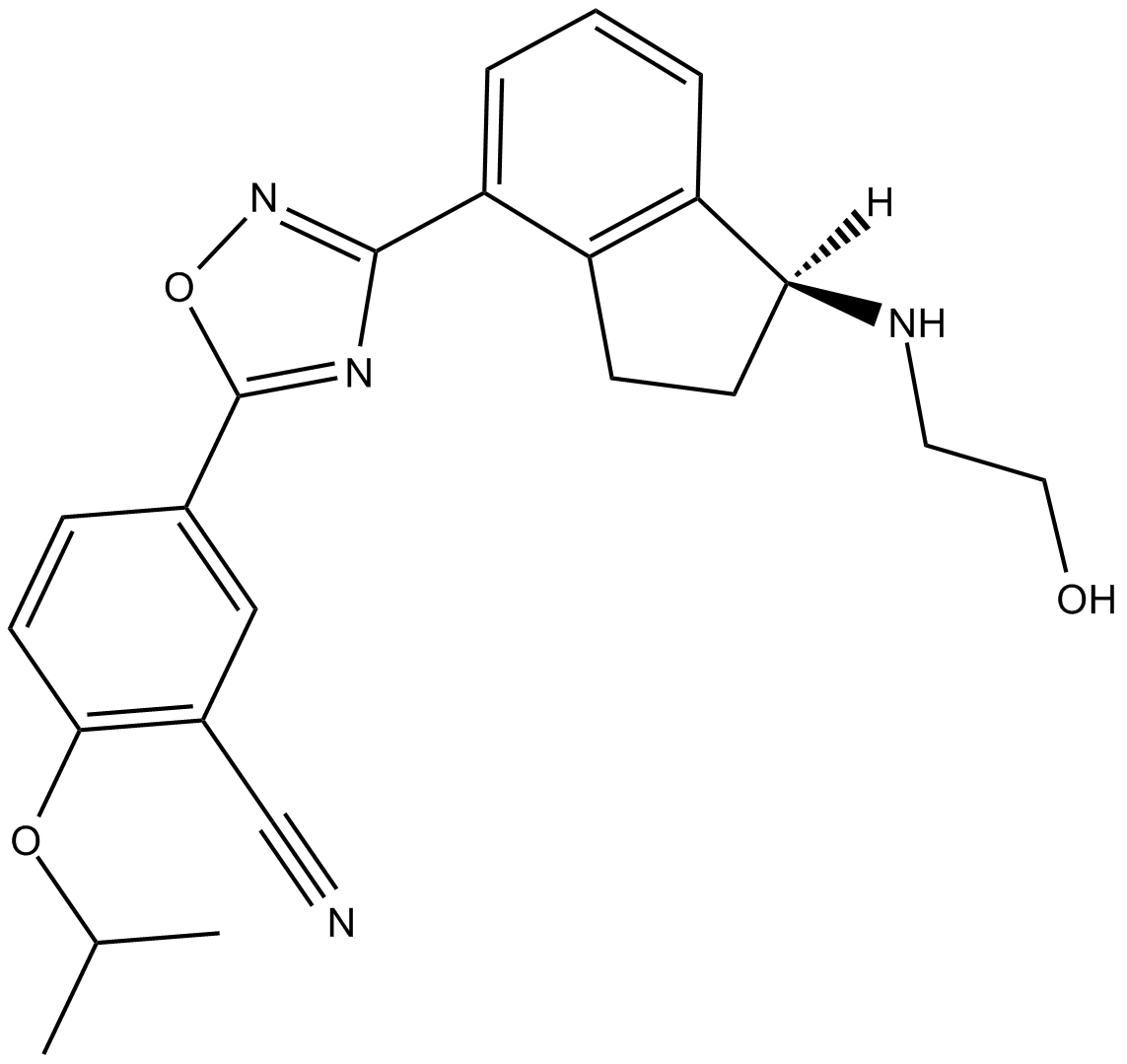Ozanimod (RPC1063) |
| رقم الكتالوجGC14360 |
Ozanimod (RPC1063) (RPC-1063) ، مُعدِّل مستقبلات السفينغوزين 1-فوسفات (S1P) الذي يرتبط بتقارب عالٍ بشكل انتقائي مع الأنواع الفرعية لمستقبلات S1P 1 (S1P1) و 5 (S1P5).
Products are for research use only. Not for human use. We do not sell to patients.

Cas No.: 1306760-87-1
Sample solution is provided at 25 µL, 10mM.
Ozanimod (RPC1063) is a high orallybioavailable agonist of the sphingosine-1-phosphate receptor subtypes 1 (S1P1) and 5 (S1P5). S1P receptors belong to the family of G-protein-coupled receptor which contains five subtypes, denoting S1P1-5. S1P receptors are involved in coronary artery caliber,endothelial integrity, cardiac function, and lymphocyte recirculation [1].
In vitro: Ozanimod(RPC1063) was a specific agonist for S1P1 and S1P5 receptors. The EC50values were 160 ± 60 pM and 410 ± 160 pM for S1P1 receptors in the inhibition of cAMP generation and[35S]-GTPγS binding. The 83% Emax value of ozanimod against S1P5 receptor was 11 ± 4.3 nM. RPC1063 dose-dependently decreased S1P1 receptor re-expression on the cell surface and resulted in near complete and sustained loss of cell surface receptor expression at concentrations above 10 nM in S1P1 receptor-HEK293T cells after 1 h incubation [1].
In vivo: The t1/2 of ozanimod was 4.7 h and 5.1 h in mice and rats after p.o. administration, respectively. About 81–82% decrease in circulating T lymphocyte was observed after dosing administration for 6 h, with a maximal blood concentration of 45 nM and 159 nM in rats and mice respectively. Oral gavage of ozanimod dose-dependently reduced the disease score of mice in both doses (0.2 or 0.6 mg/kg/day) [1].
Clinical trial: In the double-blind, placebo-controlled phase 2 trial in adult patients with moderate-to-severe ulcerative colitis, when treated with 1 mg ozanimod for 8 weeks, clinical response occurred in 57% of the patients while 0.5 mg ozanimod caused a 54% response. At week 32, the rate of clinical remission was 21% and 26% at the dose of 1 mg and 0.5 mg. The side effects were mainly anemia and headache [2].
References:
[1].Scott F L, Clemons B, Brooks J, et al. Ozanimod (RPC1063) is a potent sphingosine‐1‐phosphate receptor‐1 (S1P1) and receptor‐5 (S1P5) agonist with autoimmune disease‐modifying activity[J]. British Journal of Pharmacology, 2016.
[2].Sandborn WJ, Feagan BG1, et al. Ozanimod Induction and Maintenance Treatment for Ulcerative Colitis. N Engl J Med. 2016, 374(18):1754-1762.
Average Rating: 5 (Based on Reviews and 21 reference(s) in Google Scholar.)
GLPBIO products are for RESEARCH USE ONLY. Please make sure your review or question is research based.
Required fields are marked with *




















